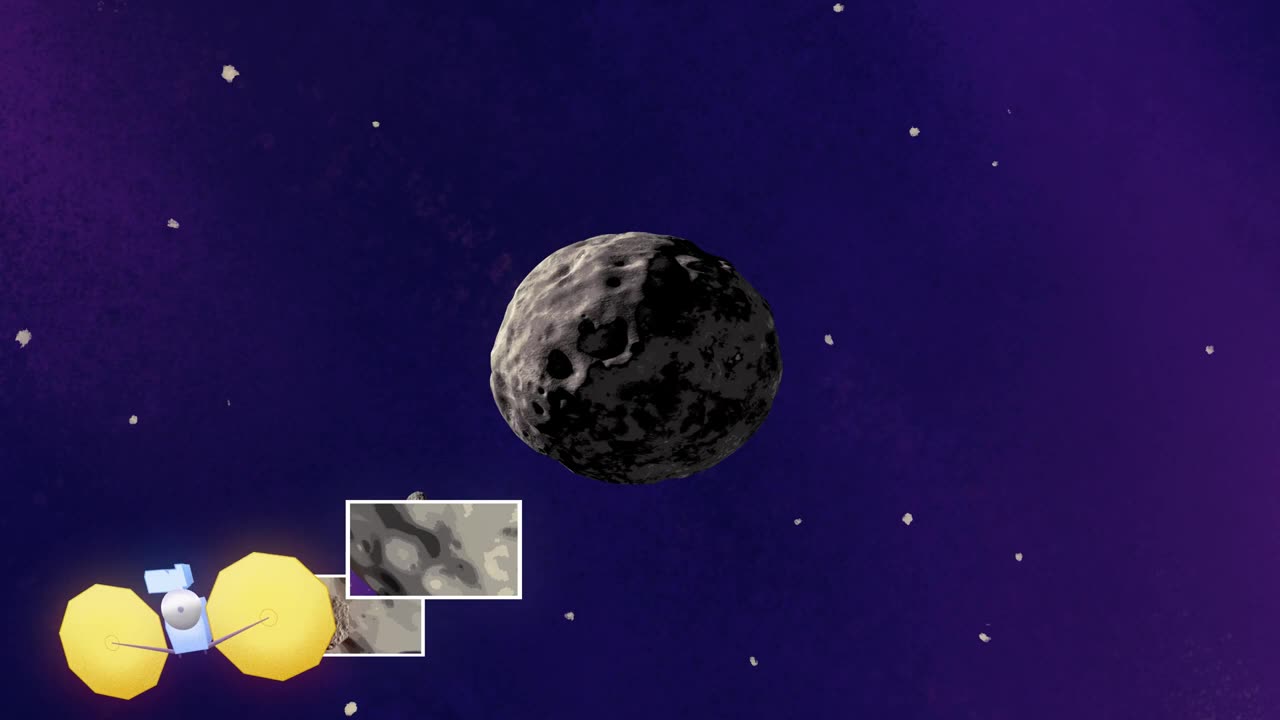Premium Only Content

Lucy's Journey_ Episode 5 - _The First Flyby_
The ambitious Lucy mission represents a pivotal milestone in humanity's ongoing exploration of the cosmos. Named after the fossilized skeleton of a hominid ancestor, Lucy aims to unveil the ancient secrets of our solar system by journeying to the Trojan asteroids—a collection of primitive space rocks that orbit ahead and behind Jupiter in two distinct groups known as the L4 and L5 swarms.
Designing Lucy's path to the Trojan asteroids was a delicate interplay of advanced astrodynamics, cutting-edge propulsion systems, and meticulous planning. This intricate dance through the depths of space required the synchronization of multiple factors, each contributing to the successful execution of this pioneering mission.
The primary objective of Lucy is to study these primordial remnants of our solar system's formation. Believed to be relics of the early era, when planets were still coalescing, the Trojan asteroids are believed to hold a wealth of information about the processes that gave birth to our cosmic neighborhood. By embarking on this unprecedented journey, scientists and engineers aimed to answer questions about the origins of planetary building blocks, the dynamics of planetary migration, and the role of these asteroids in shaping the solar system's history.
To design Lucy's trajectory, scientists employed intricate mathematical calculations and simulations. Taking into account the gravitational influences of Jupiter, other planets, and the Sun, they meticulously charted a course that would allow Lucy to make a grand tour of the Trojan asteroids. This involved a careful balance between fuel efficiency, gravitational assists, and trajectory adjustments to ensure the spacecraft's safe passage through the complex gravitational environment of the outer solar system.
One of the innovative aspects of Lucy's design was its use of gravity assists. The spacecraft's trajectory was carefully choreographed to take advantage of the gravitational pulls of Earth, Venus, and Jupiter, allowing it to gain momentum without expending excessive fuel. These precisely timed maneuvers acted like celestial slingshots, propelling Lucy on its journey across vast distances with unparalleled efficiency.
Furthermore, the propulsion system of Lucy played a pivotal role. Advanced ion propulsion technology, characterized by its high efficiency and low fuel consumption, provided the thrust needed for course corrections and adjustments along the way. This extended propulsion system ensured that Lucy could maintain its trajectory over the course of its multi-year mission, enabling it to reach its destination with accuracy.
In summary, designing Lucy's path to the Trojan asteroids was a remarkable feat of scientific ingenuity and engineering prowess. Through careful calculations, innovative propulsion technology, and the strategic use of gravitational assists, Lucy embarked on a journey of cosmic exploration that promises to reshape our understanding of the early solar system and the forces that shaped it. The mission's success not only contributes to our knowledge of space but also sets the stage for future ambitious endeavours that push the boundaries of human exploration even further.
-
 LIVE
LIVE
MYLUNCHBREAK CHANNEL PAGE
2 hours agoBuildings That Shouldn't Exist?
704 watching -
 42:09
42:09
BonginoReport
3 hours agoLock Her Up (Ep.107) - 12/18/2024
50.4K86 -
 LIVE
LIVE
Vigilant News Network
15 hours agoLiz Cheney’s Problems Just Got WORSE | The Daily Dose
1,269 watching -
 22:04
22:04
Scammer Payback
17 hours agoTorturing a Scammer Till They Give Up
4.16K9 -
 1:51:30
1:51:30
Game On!
14 hours ago $10.24 earnedConor McGregor vs Logan Paul: BIGGEST Boxing Match of the Century!
64.8K11 -
 1:04:06
1:04:06
2 MIKES LIVE
17 hours agoTHE MIKE SCHWARTZ SHOW with DR. MICHAEL J SCHWARTZ 12-18-2024
8.9K -
 1:55:41
1:55:41
Jeff Ahern
2 hours ago $0.92 earnedNever Woke Wednesday with Jeff Ahern( Leftists losing everywhere)
16.4K -
 9:04
9:04
GBGunsRumble
14 hours agoGBGuns Armory Ep 134 Walther PDP F Pro
46.2K1 -
 13:12
13:12
Melonie Mac
22 hours agoAspyr Teases Possible New Tomb Raider Games in Classic Remastered Style
39.7K7 -
 44:49
44:49
Chrissy Clark
16 hours agoThe Rise Of Female Shooters, ABC News’ $16M Settlement, & MORE I Underreported Stories
29K5